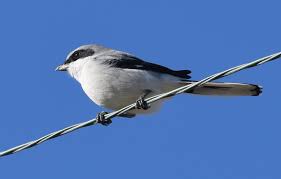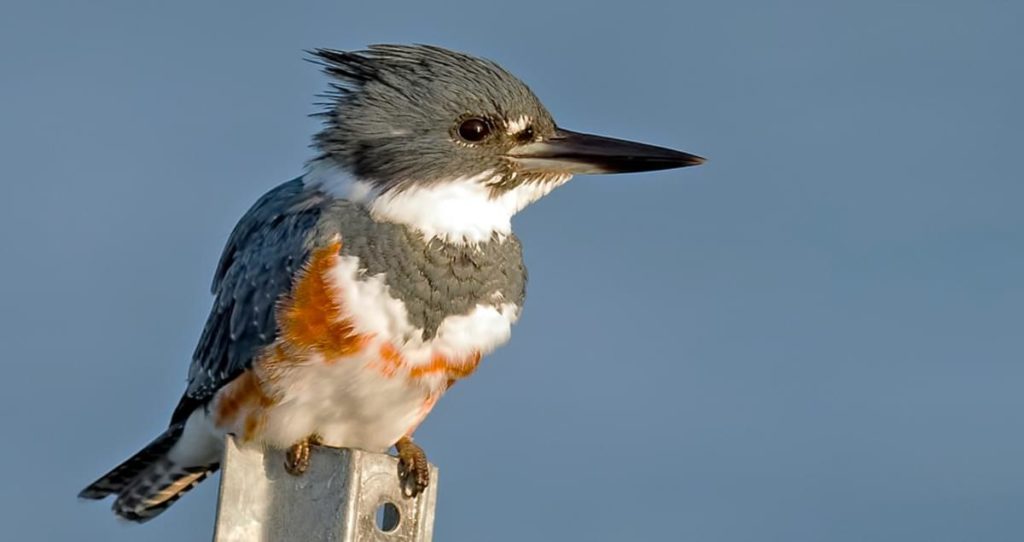Surprisingly enough, Houston has more green space than most other cities in North America. With that green space comes wildlife. But how much do we know about the animals we share our city with? Today’s edition of Beyond Bones will attempt to fill at least some of the gaps in our knowledge on that subject.
We’ve all had that experience where as we’re walking through a park, or maybe just enjoying our backyard, we encounter a bird that either looks very pretty or is doing something cool or both and we have no idea what that bird is. Mammals are easy. There are raccoons, opossums, deer and the other usual suspects that we can easily recognize, but there’s just so many birds and they all look so much alike. Right?
Well today we’re going to give you a break down of the coolest birds you’re likely to see in the Houston area and discuss what makes each of them unique and interesting.
Cooper’s Hawk
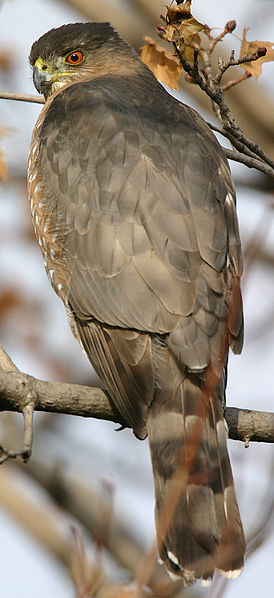
Cooper’s Hawk. Souce: Wikimeida Commons
The Cooper’s Hawk is a medium sized hawk from the Accipiter family. With short rounded wings and a long tail, this hawk is built for quickly maneuvering through dense vegetation in pursuit of its prey. Its breeding range extends from Canada to northern Mexico. Cooper’s Hawks sometimes take up residence in cities and towns, where there are plenty of rock pigeons and mourning doves to prey on.
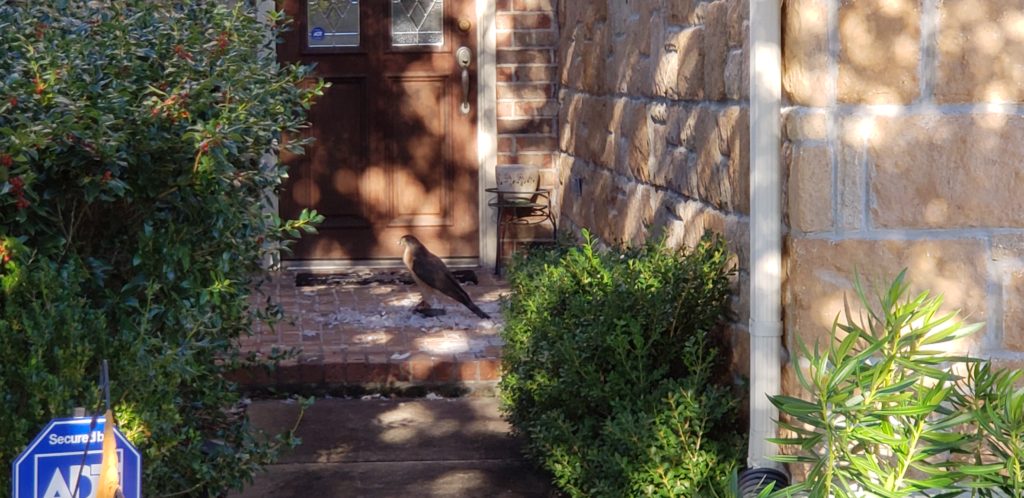
An HMNS Employee came face to face with a Cooper’s Hawk after arriving home from work. The hawk was eating another bird it had recently killed
Barred Owl
You may not have seen a Barred Owl, but you’ve most likely heard its distinctive hooting call which is said to sound like “Who cooks for you? Who cooks for you all?”. The Barred Owl’s range traditionally extends from the East Coast to the Midwest, with populations first appearing in the Pacific northwest during the 20th century.
Barred owls prey primarily on small mammals, reptiles, amphibians and insects. They prefer to roost in tree hollows, but sometimes take over abandoned twig nests. Barred owls do not migrate, or even travel far from home. Of 150 birds that were banded and found later, none had moved farther than six miles from where they were originally found.
Loggerhead Shrike
An easy way to identify these birds is by their black “mask”. Loggerhead Shrikes are small, averaging about 7 inches in length and weighing 1.5 ounces. They are famous for impaling their prey on thorns or barbed wire to be eaten later. Their prey includes lizards, other birds and insects. Think of them as an evil masked murderer terrorizing any creature smaller than them.
You can sometimes see them perched on power lines, but they prefer to be close to the ground so they can scan for prey, so you can also commonly see them perched on fences, shrubs and other medium height objects.
Belted Kingfisher
These birds can most easily be identified by the mohawk-like crest on their head. Their coloration is generally grey with a white “collar”. The also have copper colored feathers on the margins of their belly and long, straight beaks.
Their primary prey is fish. You can usually find them perched on branches at the edge of streams or other bodies of water, so places like McGovern Lake in Hermann Park or Buffalo Bayou. Their hunting method is to either dive straight from their perch into the water or to hover above the water and dive after any fish that they spot.
Red-vented Bulbul
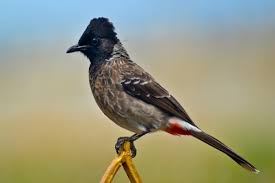
Red-vented Bulbuls are native to southern Asia but are kept as pets around the world. One theory for how they arrived in Houston is caged bird escapes, another is that some of them hitched rides on ships traveling from areas within their natural range to the Port of Houston. Our Curator of vertebrate Zoology, Dr. Dan Brooks, conducted a study on this and other invasive bird species using data collected by Houston residents. Between 2008 and 2012, 117 sightings of Red-vented Bulbuls were reported, more than half of them in the Heights area.
Ruby Throated Hummingbird
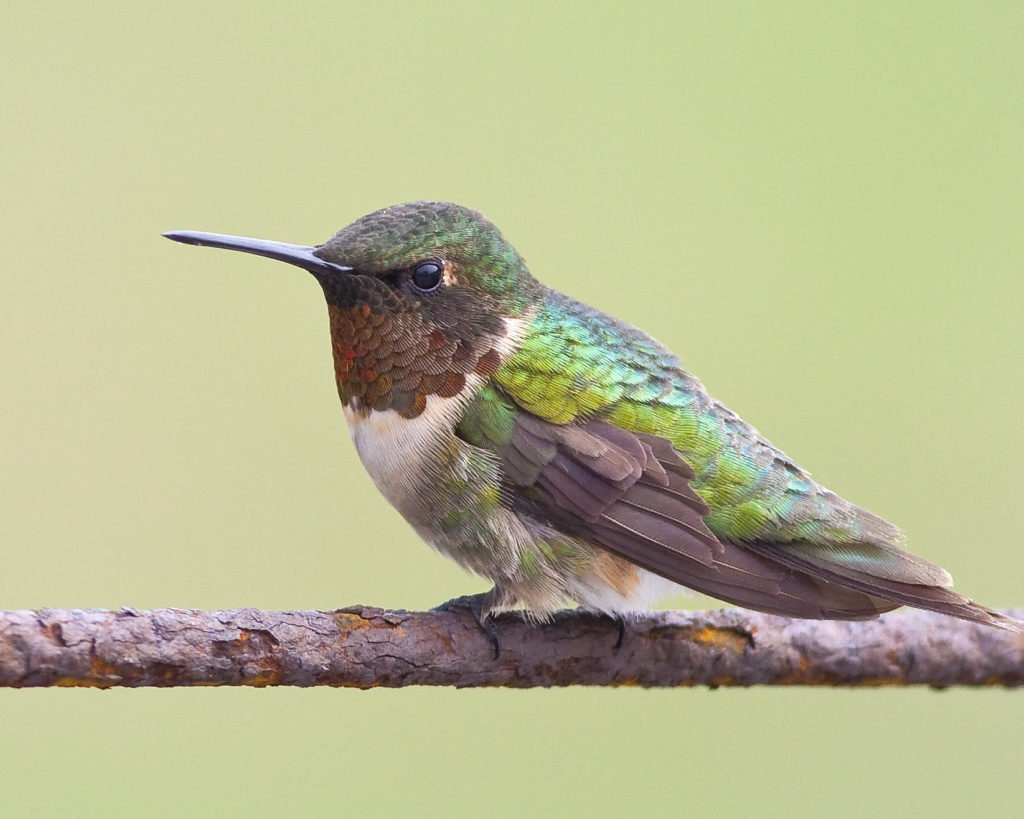
Ruby Throated Hummingbirds are beautiful bird. They have emerald green to light golden green backs and males have iridescent red feathers on their throats.
These birds beat their wings and average of 50 times a second and are able to stop in mid air, hover and even change direction, something most birds can’t do. You can spot them feeding at butterfly feeders or poking their beaks into long, tube-shaped flowers. Apparently they can be territorial about their favorite spots so if you have a flower garden in your yard you may see some of these birds battling over access to it.
Ruby Throated Hummingbirds don’t live in Houston year round, they pass through in the Spring and Fall during their annual migration from Central America to the Northern States and back.
Blue-gray Gnatcatcher
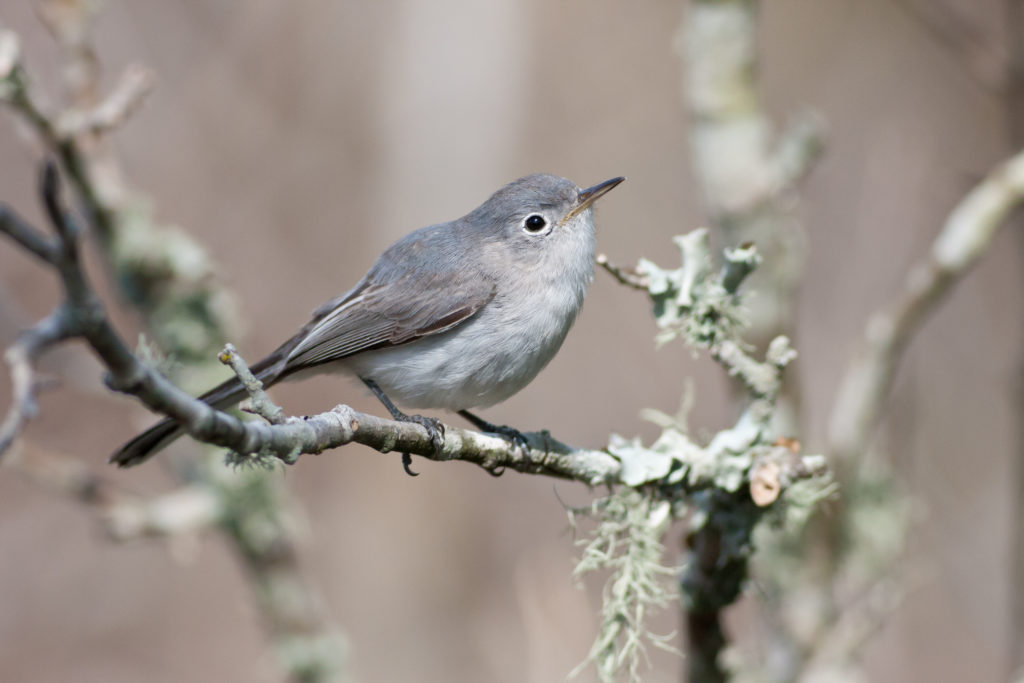
As their name suggests, the upper bodies of these birds are colored light bluish-gray. In the summer males sport a black “V” shape above their eyes, basically like eyebrows, which makes them look rather judgmental.
These tiny birds feed primarily on insects and have been known to raid spider webs both for food and for the web itself to use in building their nests.
Eastern Bluebird
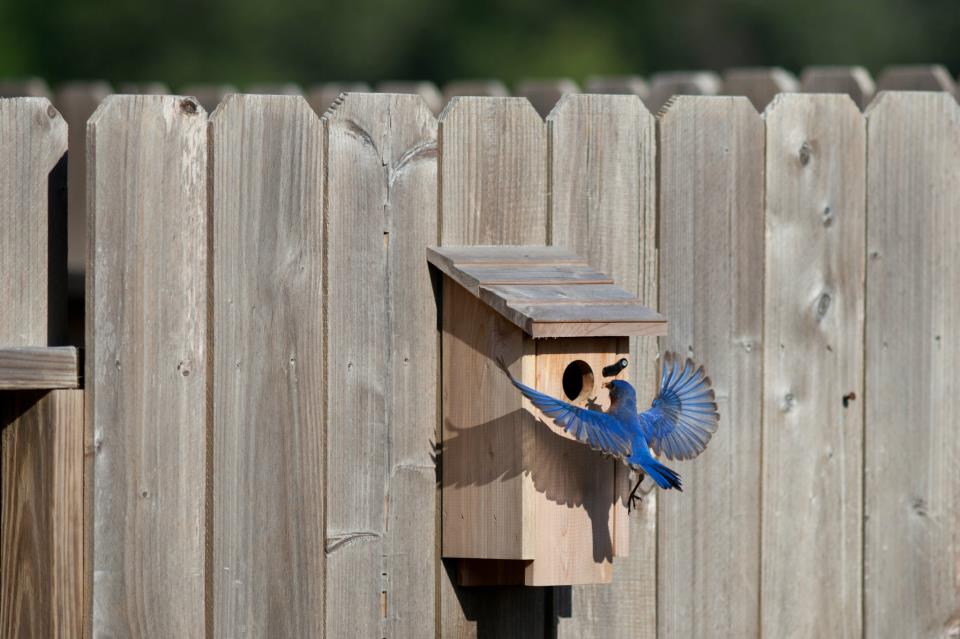
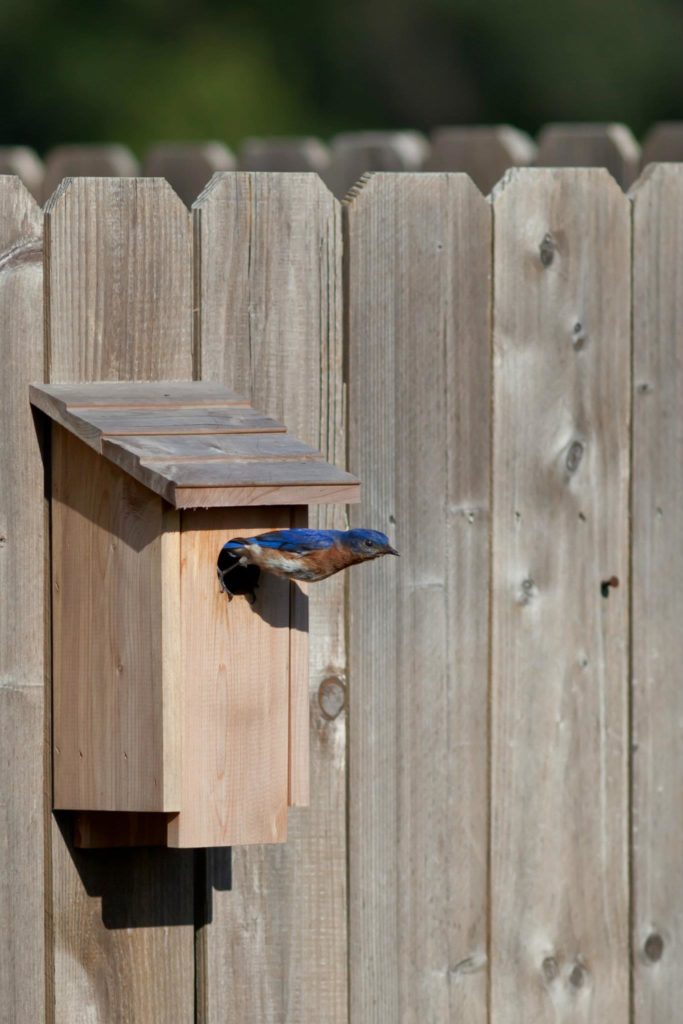
Bluebirds are technically not blue. Their feathers refract light just like molecules in the atmosphere do, thus making them appear blue. Like the sky, the color of their feathers changes depending on lighting conditions, sometimes they appear pale gray. Females are generally more gray in color than males.
Blue birds prefer open environments, so they love suburban areas with many open lawns. Their primary prey is insects. They will sometimes hover around foliage snatching any passing insects out of the air.
Red Tailed Hawk

Red Tailed Hawks have a deep brown colored back with light colored bellies and light “cinnamon red” tails. In the city you can often see them perching on utility poles or circling in the sky over a clearing looking for prey.
Unlike falcons, who dive for their prey, these birds make a relatively slow, controlled descent before basically dropping onto their prey. These birds prefer to nest as high as possible. In the forest their nesting tree is usually taller than surrounding trees and in urban environments they may nest on tall man made structures such as towers or tall buildings.
Red Bellied Woodpecker

You’re more likely to notice the vivid red cap of feathers on this bird’s head than the slightly reddish hue of the white feathers on its belly. Red Bellied Woodpeckers spend their day scampering along tree trunks prodding their beaks into the tree’s bark in search of insects.
Hope you enjoyed this little list of Houston-area birds! If you’re interested in learning more, stop by the Houston Museum of Natural Science. Our Farish Hall of Texas Wildlifehas more preserved bird specimens on display than you can count and they won’t fly away as you approach for a closer look!
Further Reading:
Frankenbirds: A True Story of Science and Immortality
Mean Green Flying Machines: The Hummingbirds Are Here!
Citizen Science Saves The Day! The Invasion of Egyptian Geese.




